This article is for reef keepers having a sand bed in their aquariums, and they want to add some corals to this substrate. Theoretically, you could put any coral down there, but some will do much better than others.
What makes a good substrate candidate?
Corals that are not bothered by sandbed
First, we’re going to need to pick corals that are not bothered by the substrate itself. As much as we’d like to prevent it, the substrate can get kicked up from time to time by either the pumps or a fish and that will get all over the corals that we set down onto the substrate.
Some corals are great at shaking that off, while other corals will do very poorly if they get periodically covered by sand.
For example, corals that are in the shape of a bowl are probably not a great choice, because that bowl is gonna fill up with sand, and the flesh in the middle is going to quickly die off. Also, sometimes it’s not the sand itself that’s the problem.
Instant Ocean Reef Crystals Reef Salt For 160 Gallons, Enriched Formulation For Aquariums
$66.79 (as of December 31, 2025 21:28 GMT +02:00 - More infoProduct prices and availability are accurate as of the date/time indicated and are subject to change. Any price and availability information displayed on [relevant Amazon Site(s), as applicable] at the time of purchase will apply to the purchase of this product.)Seachem Reef Glue Cyanoacrylate Gel Coral Frag Mounting, 20g (001167)
$9.99 (as of December 31, 2025 21:15 GMT +02:00 - More infoProduct prices and availability are accurate as of the date/time indicated and are subject to change. Any price and availability information displayed on [relevant Amazon Site(s), as applicable] at the time of purchase will apply to the purchase of this product.)ReefHD Reef Flux Anti-Fungal Treatment (100 gal)
Some inverts that live in the sand can bother corals pretty substantially. These inverts, on one hand, do great work keeping the substrate turned over, and consuming uneaten food, the problem is some of them like spaghetti worms love to hang out right at the base of corals, and not every coral likes that.
If they do that to a coral, like Blastomussa for example, over time they get stressed out and they can really start to recede and die back. So, that’s the first criteria. I’m looking for corals that aren’t bothered by the substrate whether directly, or indirectly.
Lighting requirements
The second criterion is lighting requirements. Corals towards the substrate don’t get as much light as corals towards the top of the tank. That’s pretty intuitive, but the drop-off in light might be much more substantial than you might think.
Light intensity conforms to the inverse-square law. What this means is that the intensity of light is divided by the square of the distance. So if you move twice as far away from a light source, you don’t get half the light, you get a quarter of the light.
So if you’re putting corals on the substrate, you’re essentially putting the coral as far away as possible in that tank, and because of the inverse square law, it’s only getting a small fraction of the light.
The inverse square law also ignores the turbidity of the water itself. It’s hard to factor in the effect of that water because some tanks have clearer water than others, so there isn’t a neat formula that you can plug the numbers into. But even in tanks that are only 18 to 24 inches deep, the turbidity of the water can soak up a significant portion of that light.
Last thing about light, there may be shading effects from corals and rock situated above. If you’re doing things right, the corals in the tank will grow and it’s possible that the fast-growing corals such as plating montipora for example, will grow and block light from reaching the corals situated below it. We need to find corals that do not have high light requirements and are adaptable to low light situations.
Corals that are not bothered by another coral
The third and last consideration in evaluating a good coral for the substrate is whether the coral placed down near the substrate could possibly grow up and have a hostile interaction with the corals above.
There’s plenty of corals out there that have no problem being around the substrate, or the light conditions. But they naturally grow large and extend upwards. So for example, large leather corals, or some of the faster-growing euphyllia such as frogspawn. As these corals get larger, they might start conflicts with the corals on the rockwork above them, so in that sense, I’m looking for corals that kind of stay in their lane so to speak.
So that’s the three criteria that I was looking at to make my list.
Best corals for sandbed
Pumping Xenia coral – Pulse coral
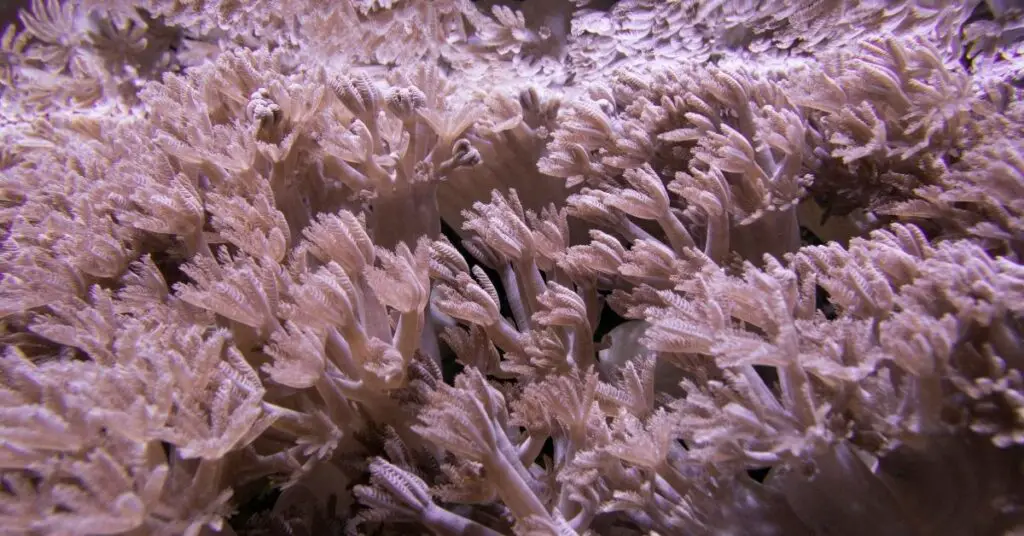
I’m starting the list off with an honorable mention that being Xenia.
Xenia is by far one of the most popular corals, and for a good reason. It’s one of the easier corals to keep, and the mesmerizing pulsing motion of the polyps will never not be cool.
There are some people that consider this a beginner coral, and there’s definitely some truth to that sentiment. It is a pretty good choice for beginners, and it can be a total coral that could take over your tank. That’s really the number one problem that reef hobbyists have with it, is that it has this explosive growth rate, and that potential just to take over a tank.
Here is where the substrate comes into play. If you have a fine sand substrate and not the chunky gravel substrate, you can make an island of Xenia right in the middle, and it keeps to itself and doesn’t grow all over the place.
Placement of Xenia coral
Xenia naturally does not like to grow on fine sand, so if you’re one of the many people out there that love this coral but are worried about it taking over, keeping them on that isolated rock in the middle of the substrate might be something that would work well for you.
So starting off the list with the actual number 5 coral is the group of corals that I will lump together as quote-unquote showpiece meat corals. These include things like Scolymia, croc island scoly, Scolymia Vitiensis, and other corals that used to be called Scollies like Homophyllia Australis. Similar corals are Indophyllia, Cynarina, that type of thing.
Regardless of the taxonomy these large polyps stony corals make for a very good substrate choice. For starters, they’re a showpiece coral that demands attention and immediately brings the viewers’ focus down to the lower portion of the tank.
In theory, you could put many of these corals on the rockwork, but on their bottom, they have a rounded dome-shaped skeleton, which makes placing them on the rock work a little precarious. It’s very easy for them to fall off the rocks, and land face-first into the substrate, or worse yet into another coral. This is especially likely if they start to swell up and they catch the flow kind of like a parachute.
When placed on the substrate there’s almost no risk of them moving around, and they don’t have too much for problems sloughing off any loose particles that might fall on them. They just need just a little bit of water flow, and the coral will pretty much do the rest of the work.
Lighting
As for lighting, Scolymia can tolerate a wide range of intensities, so the drop-off in light doesn’t adversely affect them as much as some other corals. Their color can change, but in my experience, it has a lot more to do with the spectrum provided more so than the intensity alone.
Lastly Scoly and meat corals in general, they’re not particularly hostile to corals above them, unless obviously, something falls down on them. So that’s the number five coral.
Elegance coral
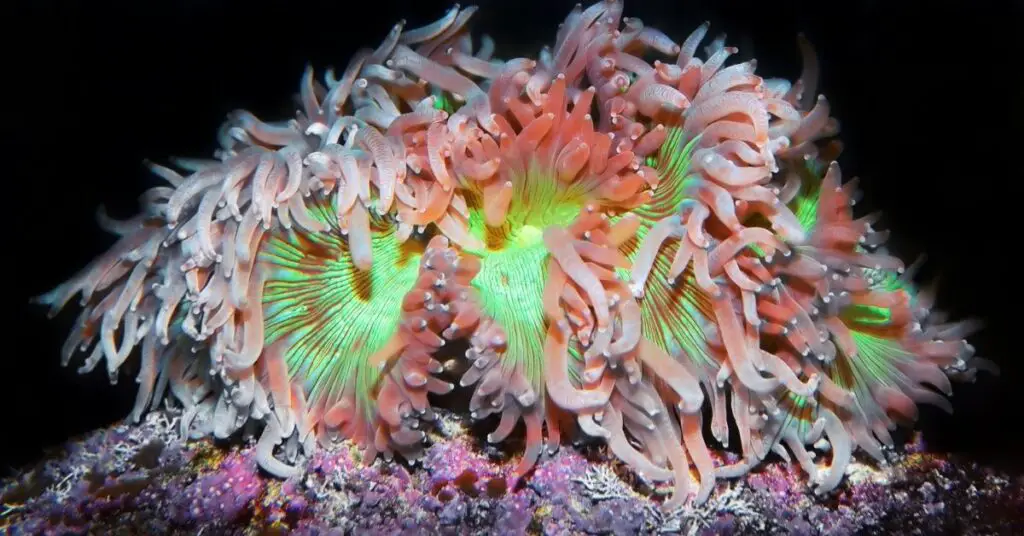
The number 4 coral on this list are elegances. I love this coral because they give that anemone vibe without actually being an anemone that could potentially move around the tank wreaking havoc. Although they can grow quite large, they don’t extend too far upwards like Euphyllia, and they’re much less likely to form sweeper tentacles that might aggravate nearby corals.
Many of them have a cone-shaped skeleton, which makes it easy to wedge into rock crevices, but also to set into the substrate. Having said that, I prefer to keep them on the sand, but I don’t like to bury the skeleton itself down into it if at all possible.
Sometimes when people do that, I’ve seen the skeletons turn anaerobic, and they get this black-stained color, which simply can’t be a good thing for the coral. To prevent this, sometimes they take some rubble, and make a small ring around the skeleton to kind of to hold it in place.
Something similar can be done with a PVC ring, cut from a two-inch or larger pipe, that can be set into the sand to hold the coral in place. While some corals on this list prefer either a fine sand substrate or chunky rubble, Elegance can pretty much do well in either type.
Placement
As for positioning, I actually like to keep this coral near the sides of the glass, or even a corner. Some hobbyists might not like the look of a coral that’s pressed up against the glass, but there is a practical reason I like to do this. Water flow brings food right to these corals, and practically shoots the food into the tentacles for an easy meal.
So I don’t ever have to go out of my way to spot feed them. So that’s my number 4 coral on this list.
Palythoa Coral

The Number 3 coral on this list is Palythoa. I want to be clear, that I’m not talking about Zoas, but specifically pallys. This can be a little confusing because the reef aquarium industry calls any of them that have a big polyp a Palythoa, and we’re guilty of that to some degree too, because oftentimes we call a big polyp Zoa a pally, because, in the industry, people look for corals based on kind of the marketing names, not so much the most scientifically accurate names, and we tend to defer to what comes up on Google search.
Having said that, most of the time it’s no big deal. But this is one of those times where it does in fact matter. Zoas and pallys handle substrate differently. Zoas aren’t an ideal coral to put on the substrate, because the sand can kind of suffocating them out.
Zoas need to stay cleaner, or else their flesh mat recedes and gets smaller and smaller and dies back. Palythoa on the other hand loves it. One of the big differences between the two is that Palythoa can incorporate substrate directly into its flesh. I have grown huge sheets of pallys directly on the substrate.
Walking Dendro coral
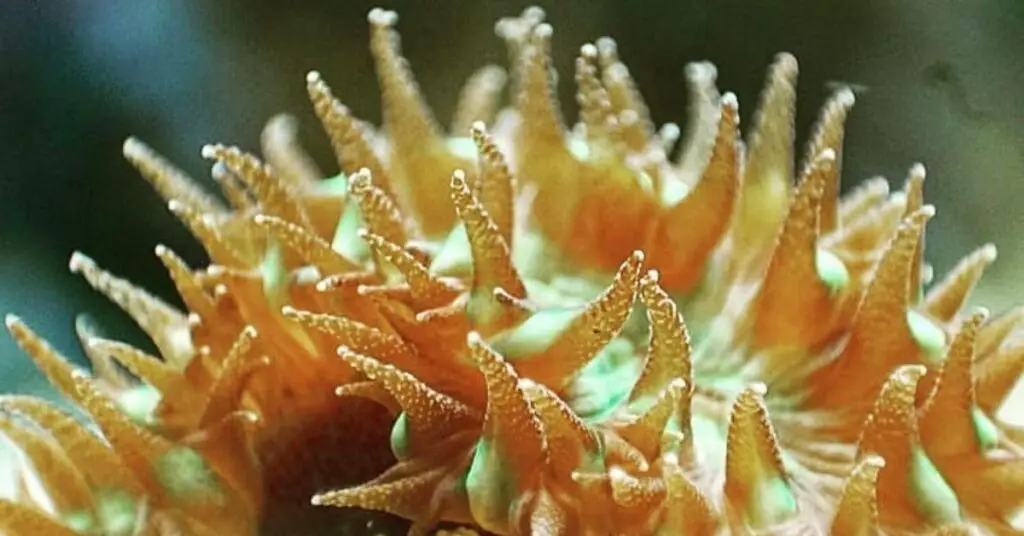
Moving on the number 2 coral on this list is the Walking Dendro. The walking Dendro from the genus Heteropsammia, is a true oddball in the hobby, but they are very cool. They don’t look super exotic or have crazy rainbow coloration, but what they do have is one of the more obscure symbiotic relationships in the wild.
At the base of the coral is a small round hole where a peanut worm resides. This worm is harmless, and it scoots the coral around the sand thus you get the name walking dendro. I’d like to keep these corals on a very fine substrate to make it a little bit more gentle on the coral, and they seem to do very well.
It’s one of the easiest corals to keep because they tend to be very hardy, and they are very aggressive feeder.
Plate corals
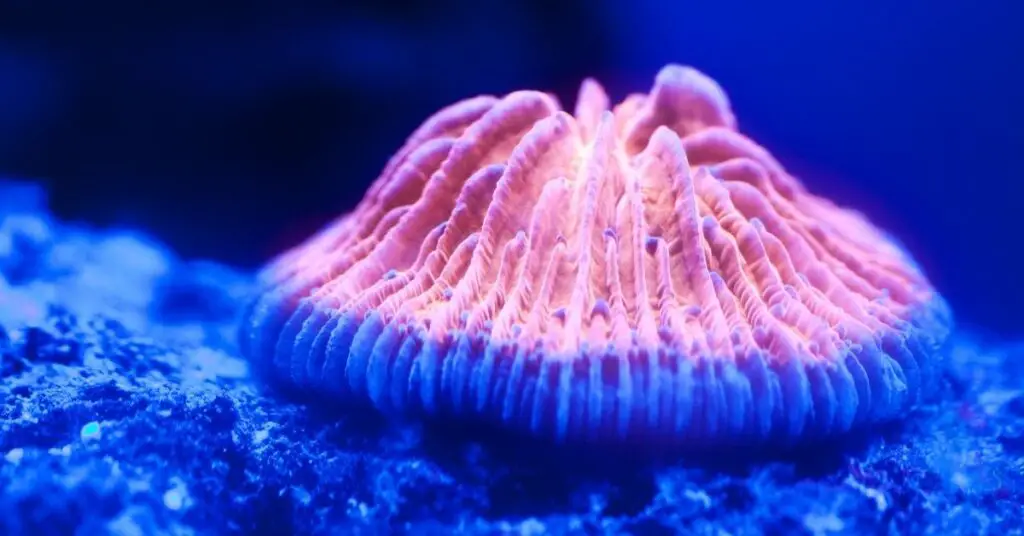
Lastly, the number one coral on this list are plate corals. This is a big category of flat corals represented by a number of general such as Fungia, Cycloseris, Diaseris, and tongue corals.
Plate corals come in all kinds of colors and patterns, some of which are very rare and collectible. Overall I would say that they’re easy to keep, easy to feed, and make for a perfect candidate to keep down on the substrate.
While most of the other corals on this list can be kept either on the substrate or the rockwork, I would only keep plate corals on the substrate. This is because they have the ability to move around by themselves, and they love jumping off of the rocks to get to the lowest part of the tank possible.
While they don’t look particularly athletic, this process happens much faster than people think. So for example, when I photographing them, I have to quickly prop them up and wait just long enough for them to puff back up, and then we shoot the photo because if we wait too long they will quickly scoot off of the platform, and probably end up facedown.
As for the type of substrate, I would say some combination of medium to extra chunky rubble. For the longest time, I thought that they required fine sand, but after seeing them diving on several occasions, and seeing how public aquariums keep them, I almost exclusively see them in heavy rubble areas.

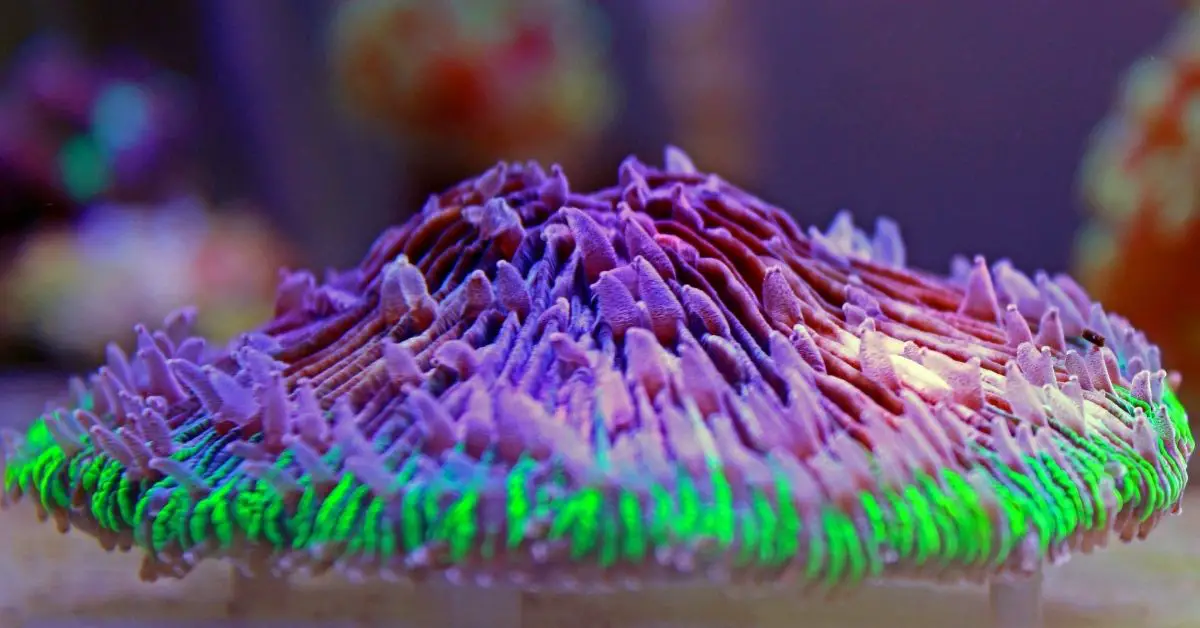










1 thought on “Best Corals for Sandbed, 5 Examples, and How to Place Them”
Comments are closed.